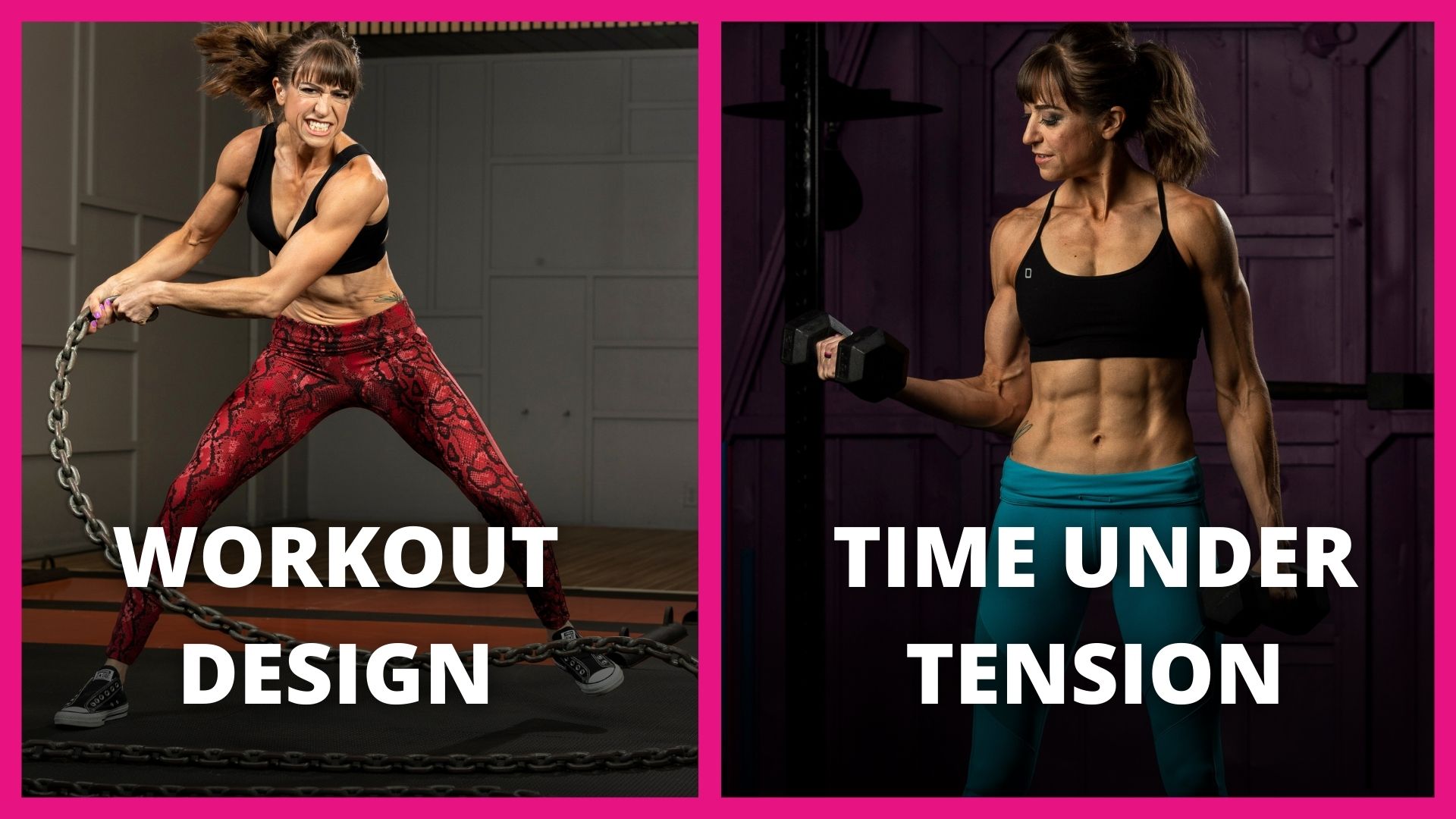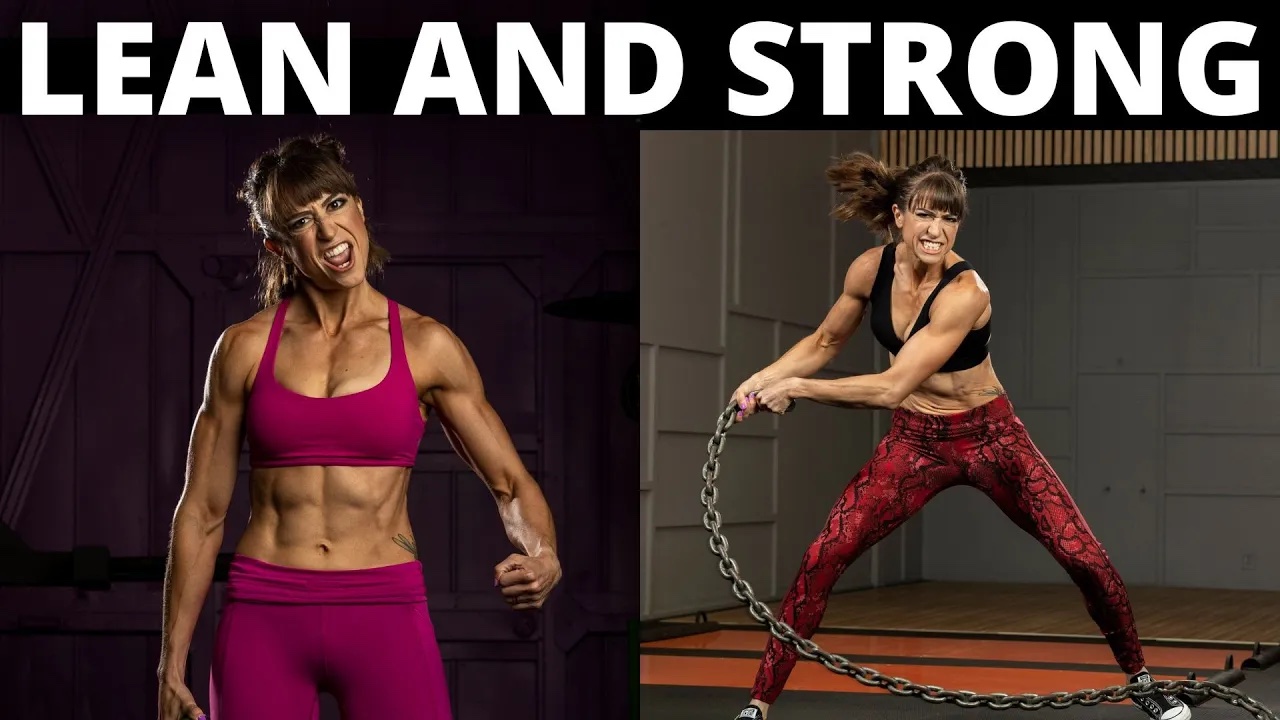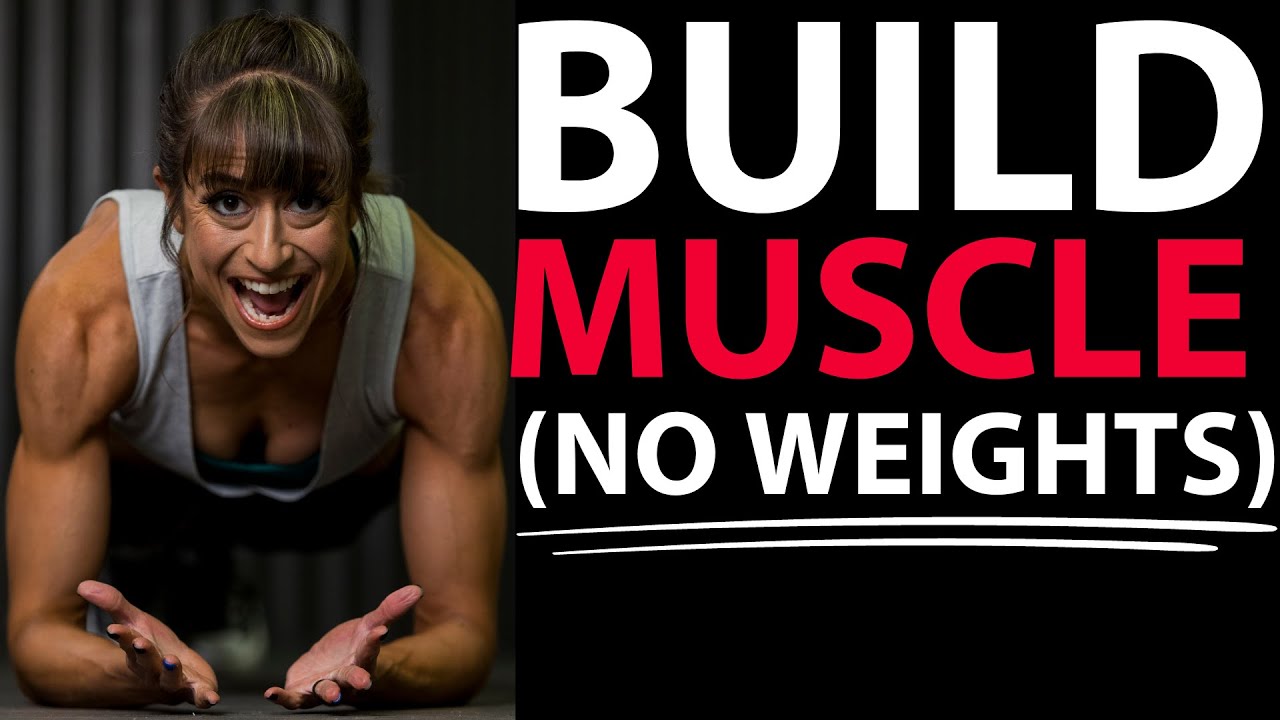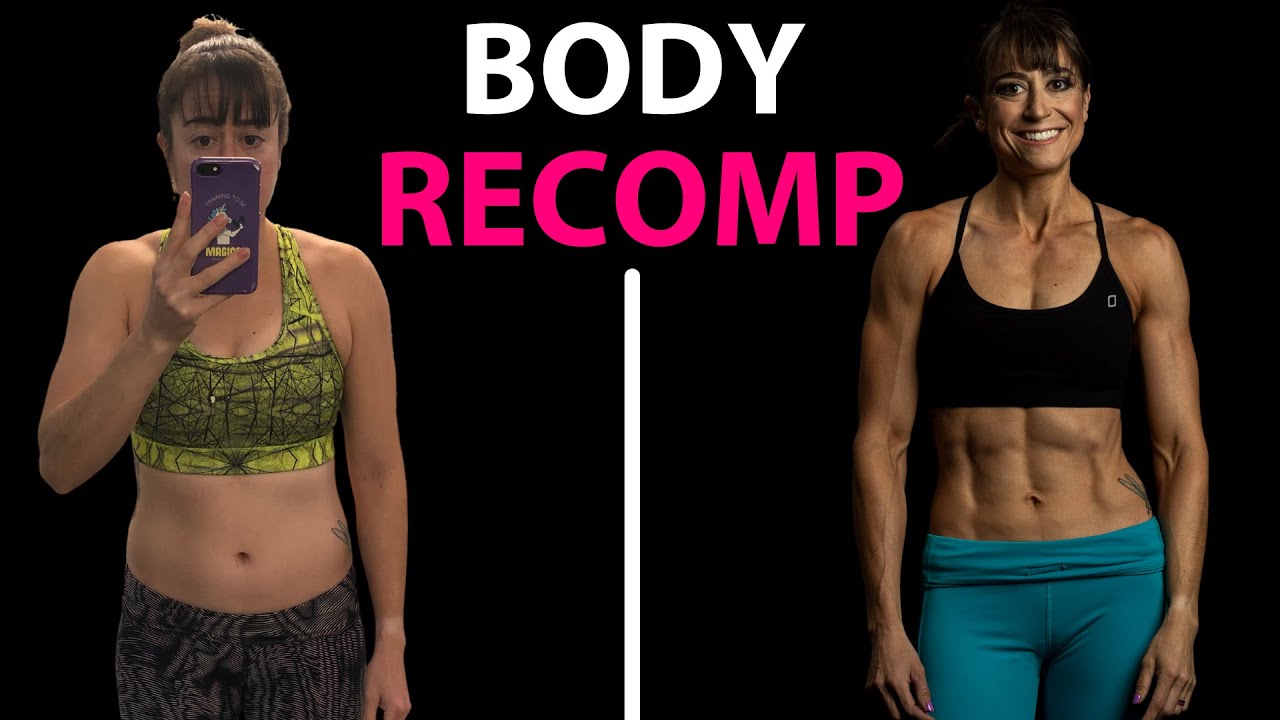
10 Ways to Progress Your Workouts (Without Adding Weight)
Weights are not the only way to progress your workouts and build strength and muscle.
And the more advanced an exerciser you are, the more you have to even turn to other forms of progression in our workouts to keep seeing results.
These tips are helpful too when training at home or traveling to help you create that challenge to build.
So whether you’re finding yourself stuck at the loads you’re currently using, don’t have heavier weights available or simply need to challenge yourself through the same but different, these 10 forms of progression will help.
#1: Combine Equipment.

Different forms of resistance work in different ways.
Combining two tools can not only help you add resistance when you don’t have a clearly heavier weight but also take advantage of the different ways tools challenge you.
Try combining a band with your dumbbell exercise.
This way you not only have the weight of the dumbbell, but the challenge of the band that increases as it is stretched and forces you to control and decelerate as it shortens.
You’ll be surprised by how even a light band exponentially increases the challenge.
You’ll even find this can emphasize or activate different muscles to a greater extent. Like on a single leg deadlift, you may be surprised by how much more you are able to engage that glute!
#2: Adjust The Range Of Motion.
Changing up the range of motion we are working through can help us challenge our body in different ways.
By shrinking the range of motion and doing more pulses with an exercise, we can spend more time under tension.
This can really isolate a muscle to work it to fatigue.
We can even work muscles under differing amounts of stretch to not only build muscle but address weaker links or areas in the movement.
And pulses can be combined with moves that work the same muscles through the full range of motion to take muscles closer to fatigue when we don’t have heavier weights.
We can also increase the range of motion for exercises to increase the difficulty of a move and load the muscle under greater stretch.
Loading a muscle through a greater stretch has been shown to not only improve muscle gains but also helps you really create stability and strength through a full range of motion so that you mobility work truly pays off!
#3: Create Instability.
When we think about making a move more unstable, we may go straight to adding in an unstable surface like doing a move on a balance board or bosu.
And while these are ways to create instability and force muscles to really activate more and work harder to stay balanced, instability can also be created through taking a bilateral, or two leg or arm movement and making it a unilateral or single leg or arm exercise.
Exercises can be included all along that continuum from two sided to one sided as well based on our exact needs and goals and even to use progression through the same but different.
For example, you could do a two legged deadlift variation, an 80/20 variation, a slider variation, a bench variation, a hand assisted variation and then a full single leg deadlift.
And even if you can do the full single leg, you may use these others to create more or less stability based on the loads you have. Even combining two forms of resistance as you vary the stability demands!
You’ll even notice how other tools besides just an unstable surface, like the sliders, can add instability.
So don’t be afraid to get creative even using things like the suspension trainer or bands to add a little stability challenge to moves!
#4: Adjust Load Placement.
Load placement, or how you hold the weights or resistance, can not only challenge different muscles to different extents, but can actually be another way to create instability as well.
An uneven or offset load, holding two different weights, or a weight on just one side, can really challenge your core especially to stabilize and work.
Where you hold the weight can help you progress moves to target different areas without necessarily going heavier too.
Consider the goblet position, holding a weight up at your chest to work your core more during a lunge over down at your sides.
Even load just one side to work those obliques and fight that rotation and lean.
And on lower body moves, like reverse lunges or step ups, holding the weight in the opposing hand can even help you focus on targeting those glutes more.
But varying where you are placing the weight can create a new challenge to help you build muscle and strength!
#5: Change Up The Tempo Of Moves.
This can mean pausing and holding in moves, it can mean slowing them down or even speeding them up based on your goal for the exercise.
But adjusting the pace at which you do moves can really have an impact on whether you’re even working to build power or strength.
And both improving your strength and your power can help you build muscle overall.
Don’t be afraid to even use different tempos throughout the move.
You may slow down the lower down in a pull up, but return to the top quickly. You may even add in pauses at different points in the move to work on weaker areas.
Slowing down the eccentric especially, or the part of the move where the prime mover muscle is lengthening, can not only lead to greater muscle gains but even allow you to do a move advanced variation of an exercise than you otherwise would be able to.
And this can help you further build strength. I love using it especially to build up moves like push ups or pull ups!
#6: Spend More Time Under Tension.
Tempos really have an impact on your time under tension, but I wanted to mention time under tension, and specifically more time under tension as its own form of progression for a reason…
Because you can also impact time under tension through range of motion and even workout design.
With time under tension, you are getting a muscle to spend more time working.
Slowing down the tempo of a move makes a muscle work for longer, but so can adjusting the range of motion, both increasing it but also shrinking it.
In moves like even the Get Up Lunge, you’re increasing the range of motion of a basic lunge to go all the way down to the ground, but you’re also shrinking it in that you’re not standing up at the top.
So your legs never completely get a break. They’re in that working range of motion the entire time. And this can create a great challenge without you adding heavier and heavier loads.
Even adjusting workout design to combine moves or use intervals of work, which I’ll go over more in tip 8 can have an impact!
But getting those muscles to work hard for longer can help you increase that challenge!
#7: Switch Up Postures and Positions.
Simply adjusting the posture or position you are doing an exercise from can dramatically change the challenge of it and even the extent to which you feel muscles working.
We don’t realize how much we can often use other muscles or even seek out mobility from other areas to assist.
So even changing up an overhead press from standing to seated may make us have to check our ego and even go lighter with weights.
Changes in our posture can even help us target different aspects of a muscle.
Like a glute bridge and curl is going to hit our hamstrings in a different way than a deadlift because we are working the muscles by moving at different joints.
So don’t be afraid to vary how you’re doing those same basic moves or even consider how to include different exercises to target the same muscles!
#8: Vary Your Workout Design.
We can often get very “married” to specific ways of programming.
I often see people wanting their body part splits over the weeks and workouts with one move done in isolation.
Or they need specific intervals or circuits.
But we need to realize that sometimes varying up our reps, sets, rest intervals and such can really impact how we’re challenging our bodies.
Especially when you don’t have heavier weights, consider timed intervals of work to help you push past failure and do those few extra reps.
Consider even back to back intervals working the same area but with one move that is compound and one that is isolation.
This combination of isolation and compound can even be key if you don’t use intervals but do count reps and sets.
While we may often do a superset when we have heavier weights to allow one area to rest as the other works, sometimes doing back to back moves for the same muscle group can help us work it closer to fatigue when we don’t have heavier weights to challenge ourselves.
Don’t be afraid too to use different rep ranges. If you can challenge yourself for 6 reps great, but if you then have another move that you need 15 or even 20 reps to feel add up, don’t be afraid to use both rep ranges even in the same series!
But realize that how you adjust exercise order and even use different rep and set designs can have a huge impact!
#9: Increase Training Density.
How we design our workouts can also have a huge impact on our training density. But I think it is key to note this as a form of progression on its own.
Because training density is the amount of work you can complete in a certain amount of time.
And often to try to do more volume of work (more reps and set), our workouts just get longer and longer.
But this doesn’t have to be the case.
While we don’t just want to cut out rest from our workouts and turn our strength training into cardio and we don’t want to just add more reps and sets when we don’t have weights to create more fatigue, we can use training density to our advantage to see results.
Because often when we are training with lighter loads, a greater volume of work is needed.
This is also why workout design is so important to consider. Doing even things like timed supersets, compound sets or circuits, or Density Training, can be key to helping you get in more work without increasing time.
Your goal is to use harder variations and basically move more weight but without increasing time and through this create progression.
So consider each week how you can do a harder variation or another rep but in the 10-15 minutes you’ve set for that series!
#10: Adjust Your Workout Schedule.
Many of us may have grown up seeing those body part split workout schedules where each day you work a different area.
But not only have studies shown that more frequently working an area, 2-3 times a week, can be beneficial, but the more you don’t have loads to challenge you, the more you do want to use volume of work, or even training density to your advantage.
And this isn’t just in a single workout, but even something to consider over an extended timeline of a week.
If you are training with limited tools or struggling to build an area, consider adjusting your workout weekly split.
Consider more full body workouts or even hemisphere, dividing routines into upper and lower workouts.
You can even do anterior/posterior splits focusing more on those frontside vs. backside muscles in routines.
But vary what you’re including in your workouts to create that progression, even down to using different tools, different moves, different tempos, all of these other forms of progression, over the week to see results!
Remember we can create a challenge and see better results through not just adding weights but using these other 10 forms of progression! Which will you include in your workouts for a new challenge?
Want amazing workouts you can do anywhere? Check out my Dynamic Strength program…
–> LEARN MORE





